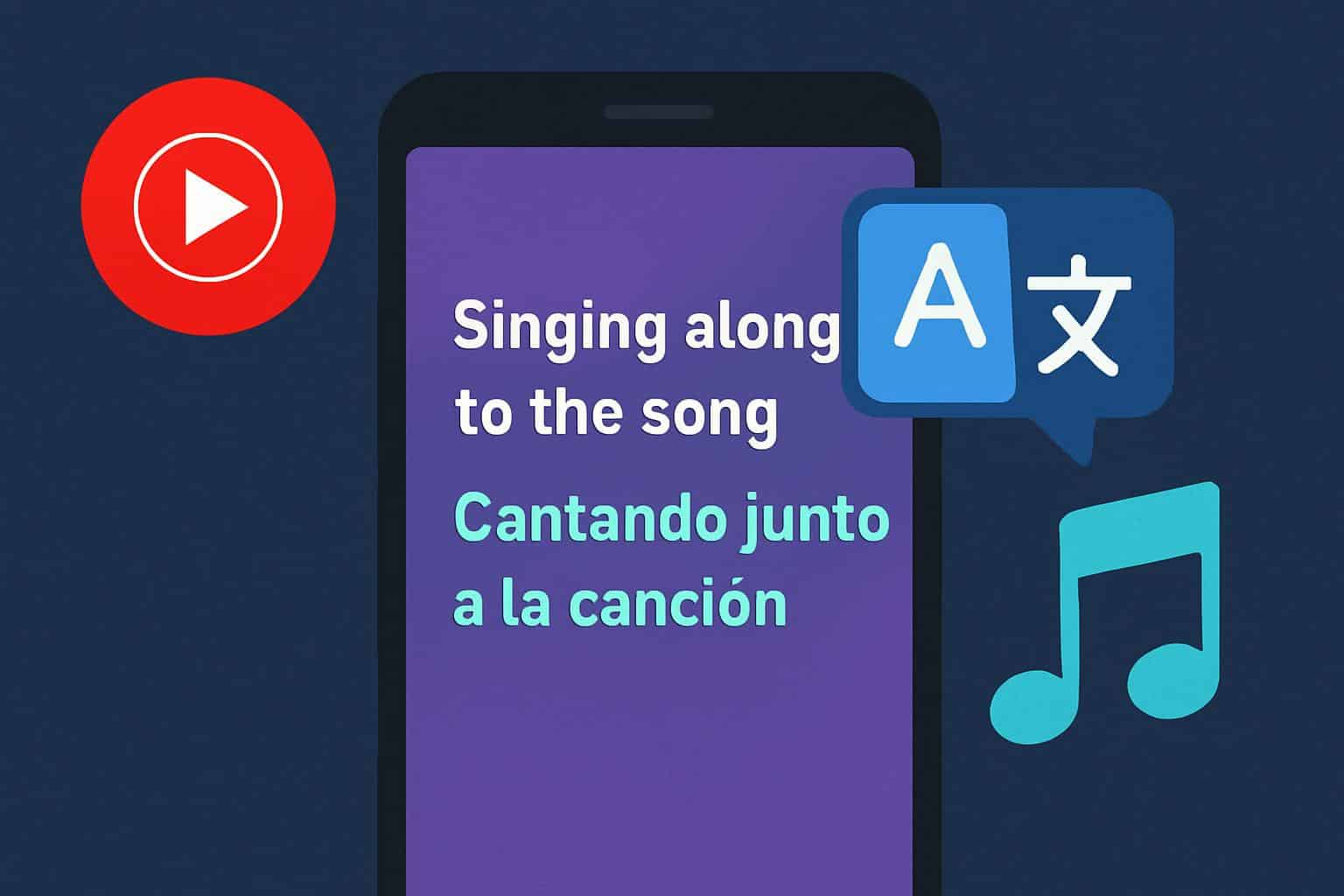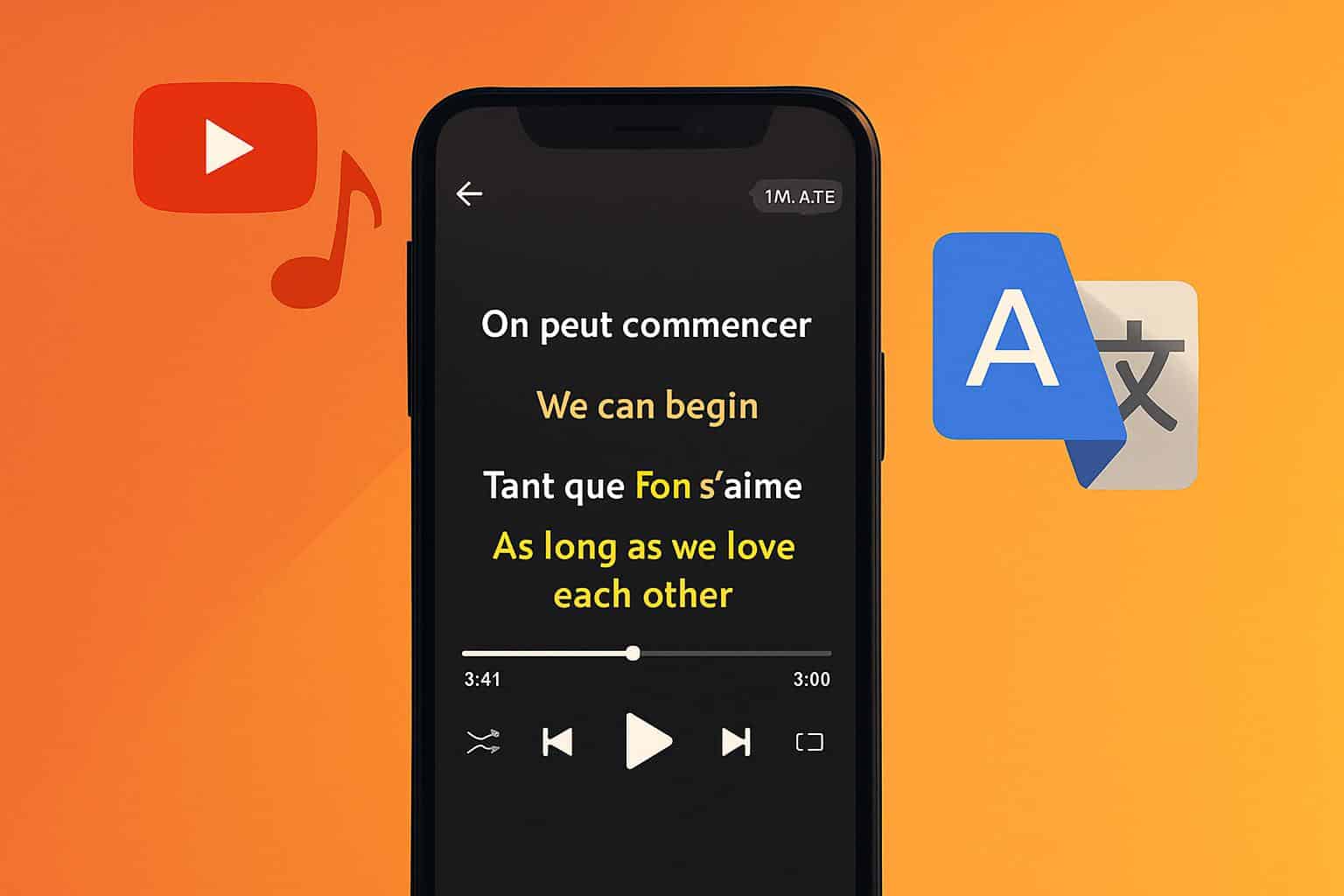Google is whispering to some YouTube Music users in hopes they’ll test a pop-up feature for translated lyrics: The service wants listeners to create their own videotaped testimonials about the experience. Early sightings indicate it’s a limited rollout, but the move suggests a wider effort to allow global hits to be more understandable without leaving the app.
What the Early Lyrics Translation Test Looks Like
Some users are seeing a new Translate control on the lyrics view for select tracks. When tapped, the app produces a translation that is displayed as a second line underneath each lyric, which leaves the original text visible. The layout matches the well-known time-synced lyrics experience, allowing you to read along while comparing languages line by line.
- What the Early Lyrics Translation Test Looks Like
- How Language Selection for Translated Lyrics Works
- Premium Access and Availability for the New Lyrics Feature
- Why Built-In Lyrics Translation Matters to Listeners
- How It Stacks Up Against the Competition
- Open Questions and What to Watch as Testing Expands

Because the feature is building on an existing lyrics system, it’s available only on songs for which the app already has official lyrics entered. YouTube Music gets lyrics from partners, and availability can differ by track, territory and label permissions — that’s why the test feels so random.
How Language Selection for Translated Lyrics Works
In the present implementation, users are unable to manually select a target language from the lyrics screen.
Instead, the translations obey the app’s language setting, which may be distinct from the device default. Switch the language of the YouTube Music app and the translation follows.
Google does not specify the underlying system, but you can be sure that the service incorporates its neural machine translation technology. Google Translate already has more than 100 languages, but the slang, metaphor and code-switching of hip-hop, reggaeton and K-pop can tie up even the best models — so be prepared to receive awkward phrasing.
Premium Access and Availability for the New Lyrics Feature
According to reports, this feature is gated behind a paywall and will cater strictly to paid subscribers, which makes sense as YouTube locks all of its convenience features behind Premium. YouTube said YouTube Music and Premium had more than 100 million paid subscribers globally, a large base that could make translated lyrics popular overnight if the test graduates to a full rollout.
Availability looks spotty, account-by-account and region-by-region, but the test is pretty limited. As with any Google experiment, server-side switches probably govern access, so even those of you who have updated the apps may not see the option yet.

Why Built-In Lyrics Translation Matters to Listeners
Streaming has transformed non-English tracks into mainstream staples. The IFPI’s Global Music Report accounted for more than two-thirds of all recorded music sales to streaming, with globalized catalogs influencing listening habits. In the United States, data from the RIAA show that revenue for Latin music has boomed in recent years and major K-pop acts regularly appear on charts around the world.
For fans, translated lyrics provide more than just answers — they offer context. Making out the themes in a Bad Bunny verse or a NewJeans hook might deepen engagement with artists you admire, be conducive to language learning and perhaps even make concerts more meaningful. But for labels and artists, it’s an enhancement to the platform’s retention: Listeners are less likely to jump off the platform in search of third-party lyric translations.
How It Stacks Up Against the Competition
Many of the leading services offer on-screen lyrics — often thanks to partners like Musixmatch or LyricFind — but built-in translations are scarce. Fans can generally depend on crowd-sourced translations from platforms such as Genius or third-party apps. Should YouTube Music deploy this more broadly, it would be one of the first mainstream streaming apps to natively and at scale include translation.
The approach — of threading original and translated lines side by side — is also one that honors the artistry of the source text while opening greater access for multilingual audiences, students among them. That recipe of dual-line format could prove to be a differentiator, especially if the quality and coverage remain consistent.
Open Questions and What to Watch as Testing Expands
Key questions:
- How many languages will be supported at launch, and when can users eventually expect a manual language picker?
- Will there also be translations for time-synced karaoke mode and quality controls for perhaps inappropriate or idiomatic content?
There’s also the paywall debate. Some users believe that it would increase accessibility in translation, which ought to be free; others identify it as a good thing to charge for as part of what makes Premium reasonable. Google’s choice here might affect how rivals rank features that serve a similar purpose.
For now, the test sends an unmistakable signal: YouTube Music aims to make its sprawling global catalog more readable without disrupting the flow of listening. If the company can strike the right balance of accuracy, coverage and user control, lyrics translation could be one of the service’s most quietly powerful additions.

